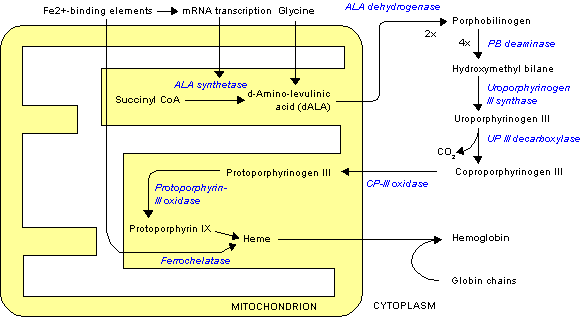Dobson's Complaint: The Story of the Chester Porphyria Ed Giles R Youngs
Royal College of Physicians, 18.50 [pounds sterling], pp 200 ISBN 1 86016 047 6
Rating: ***
There are many aspects of medical disorders that fascinate doctors: the application of the latest scientific techniques, complex biochemical mechanisms, the detective work involved in teasing out a complex history, the personal strengths that emerge when tragedy strikes, and the thrill of finding a new disorder. This book covers all these features and more about one of the rarer variants of porphyria--Chester porphyria, which results from a combination of the deficits found in the commoner acute intermittent porphyria and variegate porphyria. Although concentrating on this variant, the book also provides an overview of the porphyrias in general.
Giles Youngs, a physician in Chester, tells the story of the painstaking work of himself and his past juniors (who have contributed to many aspects of the research in this book). They traced back members of the 300 strong Cheshire kindred affected by this condition to the marriage of a Dee salmon fisherman in 1888. Youngs is brutally honest about how he was initially shamed by one of the family--who clearly knew more than he did about the nature of the curse responsible for wiping out large swathes of her family--into starting his mammoth task, which clearly became a labour of love as time progressed. He pays due debt to the doctors who preceded him, in particular to Dr Zorka Bekerus, who in 1965 was the first to recognise the uniqueness of this variant of porphyria.
The monograph is comprehensive in its coverage of all the aspects of this disorder. Individual chapters stand alone--indeed, several are transcripts of previously published work--and this inevitably leads to a degree of repetition and some contradiction. Nevertheless, the advantage of this arrangement is that the book can easily be browsed and used as a reference for the genetics and biochemistry of this disorder as well as the clinical features. These include neurological and psychiatric disturbances, hyponatraemia, and the hypertension and renal failure that have been responsible for so much of the mortality in the Chester kindred.
Youngs has traced the death certificates and case notes of long dead members of the families, identifying with the benefit of hind-sight the errors made by previous generations of doctors. He avoids, however, any sense of triumphalism and never loses sight of the personal tragedy that obviously still haunts the family.
My only criticism is that no room was found for the family's voice. As with porphyria kindreds elsewhere, morbidity and mortality have been reduced by better diagnostic techniques, avoidance of precipitants (especially barbiturates and other drugs), and treatment of accompanying hypertension. However, family members continue to live with the burden of a rare genetic disorder, one described as the "little imitator" because of the multitude of symptoms, which often led sufferers to be misdiagnosed as "hysterics" With this background, they must have a fascinating perspective, which would have complemented this enthralling book.
Helen Crimlisk, trainee in child psychiatry, University of Marburg, Germany
COPYRIGHT 1999 British Medical Association
COPYRIGHT 2000 Gale Group



